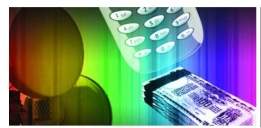Double Whammy - Operators to pay more for spectrum usage, microwave access

-
Soon after announcing a hike in spectrum usage charges for telecom operators, the Telecom Commission has also approved an increase in radio wave fees for microwave access and backbone networks, necessary to run mobile operations.
The reason for the latest hike is that the Department of Telecommunications (DoT), which has been struggling to meet the radio spectrum needs of existing and new mobile operators, has also been facing a crunch for microwave frequencies that connect telecom towers to the network's telephone switching exchanges.
Put simply, mobile operators require rights to use the airwaves to enable wireless communication between mobile handsets, which send and receive radio signals from the telecom towers. Connectivity between a phone exchange and a tower can be achieved either through a long-haul microwave radio frequency or an optic fibre cable.
According to analysts, microwave links are preferred as this enables connectivity with exchanges without the attendant long waits required for obtaining necessary approvals for digging and laying the cable network. Moreover, microwave frequency bands – available in the 6 GHz, 7 GHz, 15 GHz, 18 GHz and 23 GHz bands – are a less expensive option than laying thousands of kilometres of optic fibre cable to connect telecom towers within cities, apart from carrying intercity traffic. Besides, as telecom analyst Mahesh Uppal points out, "The operators need this spectrum, especially in the remote, rural areas where laying cable is challenging."
As all operators, new and existing, are currently in expansion mode, the availability of airwaves is stretched thin. A senior DoT official makes the same point: "With operators expanding their national footprint, there is an obvious need for more microwave spectrum. Besides, we have many users for this spectrum, including educational institutions and other government departments such as space and science, and there is not enough microwave to accommodate everyone."
India already has over 125,000 phone towers, a number that is fast increasing. By end January 2009, both Reliance Communications (RCOM) and Vodafone Essar will be rolling out networks and have already submitted applications for microwave frequency in more than a dozen states. Other operators including Tata Teleservices, Idea Cellular, S Tel and Datacom Solutions will all be looking to do the same. And unless more spectrum is freed up, they will have to invest in laying cable as they roll out their telecom tower networks.
Keeping this in mind and in an effort to distribute the scarce resource equitably, DoT has decided to hike the spectrum charges (licence fee plus royalty) for microwave access and backbone networks of GSM and CDMA operators beyond the sixth carrier (spectrum allocated for the sixth time for continuing operations).
Microwave spectrum is allocated in chunks of 7 MHz, 14 MHz and 28 MHz (each chunk is known as a carrier). According to telecom analysts, an operator can typically service a circle with two carriers for at least four to five years, and pays a revenue share to DoT for using the spectrum.
According to the DoT notification, the hike will be in slabs and will be applicable retrospectively from November 2008. The fee, which was as low as 0.4 per cent of the aggregate gross revenue (AGR), has now been increased to almost 4 per cent as per spectrum requirement. Thus, telecom operators who were paying 0.4 per cent of their AGR earlier will now be paying 1.85 per cent for the seventh carrier of 28 MHz. The eighth carrier, which paid 0.45 per cent of the AGR, will now shell out 2.3 per cent. Likewise, an operator getting extra spectrum through the eleventh carrier will now pay 3.95 per cent.
This follows immediately after the Telecom Commission imposed a 1 per cent additional spectrum usage charge for radio waves below 8 MHz and 2 per cent for those above 8 MHz. This will rake in an additional Rs 40-50 billion for the exchequer, with mobile operators such as Airtel, Vodafone Essar and Idea all having to shell out more.
According to analysts, this move will in a way help exonerate Communications and IT Minister A. Raja, who is under pressure from the finance ministry over the decision to award telecom licences cheap.
Meanwhile, DoT has not come to any decision on the controversial proposal of levying a one-time charge on players holding more than 6.2 MHz of spectrum. This, according to industry watchers, could help the ministry garner another Rs 40 billion. For now though, the telecom industry is absorbing the latest round of hikes and has little choice but to grimace and accept it.
- Most Viewed
- Most Rated
- Most Shared
- Related Articles
- Manufacturing Hub: India emerges as a ke...
- TRAI performance indicator report for Se...
- Prashant Singhal, partner, telecom indus...
- 2G spectrum scam: continuing controversy
- An Eventful Year: Telecom highlights of ...
- Telecom Round Table: TRAI’s spectrum p...
- Manufacturing Hub: TRAI recommends indig...
- Linking Up: ITIL to merge with Ascend
- High Speed VAS - Killer applications w...
- Bharti Airtel seals deal with Zain - Zai...






